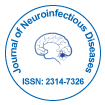Cloning of EF1 Alpha Short Using Lentiviral Vector Incorporating Human CD18 Gene in Inflammation
Received: 08-Aug-2020 / Accepted Date: 22-Aug-2020 / Published Date: 29-Aug-2020 DOI: 10.4172/2314-7326.1000301
Leukocyte extravasations are an initial, important and complex phenomenon that occurs in response to antigen attack or local injury. In order to enter the damaged tissue, the circulating leukocytes must adhere to endothelial cell wall. This is accomplished by a group of cell adhesion molecules (CAMs) known as integrins. Four alpha integrin subunits are associated with common beta2 integrin subunit to form four different heterodimer. Mutation in the gene ITGB2 that codes for beta2 integrin subunit (CD18) lead to genetic immunodeficiency disorder called LAD1. As starting step of the work in gene therapy a construct was made to be packaged in SIN lentiviral vectors. Three way ligation systems were used in the strategy. PCL20, Ef1a and CD18 were restricted and ligated subsequently using software. It was then transformed into E. coli cells and vector was isolated. The vector was then transformed into E. coli cells to obtain plasmid at higher yield to be packaged with the aid of helper plasmids to form infectious viral particles directed towards gene therapy for LAD1. The work can be ideal design for gene therapy of other genetic disorders as well. The adhesion of leukocytes to vascular endothelium is a hallmark of the inflammatory process. The migratory outward radial movement of leukocytes toward the venular endothelium is specific red blood cells that overtake leukocyte and push them toward the venular wall. The interactions are stimulated by mediators that are elaborated from inflamed tissue and the entire process of leukocyte–endothelial cell adhesion is regulated by the sequential activation of different families of adhesion molecules that are expressed on the surface of leukocytes and ECs. Leukocyte adhesion deficiency (LAD) occurs due to endothelium which impairs the emigration from the blood vessels to the sites of infection. LAD is rare primary immunodeficiency disorder. It is characterized by defects in leukocyte adhesion process followed by leukocytosis and infections. There are mainly three types of LAD which differ from each other by etiology.
Leukocyte adhesion deficiency type I is an autosomal recessive disorder which is caused by defects in defects in the ITGB2 gene which codes for the ß2 integrin subunit. This results into reduced expression of ß2 integrin αLß2, αMß2, αXß2 and αDß2 integrins on monocytic cells. The gene is present on the achrosome of the long arm of human chromosome 21. The mutation leads to severe defects in adhesion of leukocytes to the endothelial cells thus causing impairment of inflammatory response leading to infections. Human CD18 may be present on the leukocyte surface membrane but it is non functional. The core symptom of LAD I is it delays detachment of umbilical cord stump after birth. In newborns, stump falls off within first two weeks whereas the affected patients with LAD I it occurs at three weeks or later. Also they have inflammation of umbilical cord stump called as omphalitis causes due to bacterial infection. Other symptoms include severe recurrent infections with no pus formation. Such infections localized primarily to skin and mucosal surfaces. CD18 deficiency creates more severity of clinical infections. Two phenomenon mainly severe deficiency and moderate deficiency. Patients with less than 1% of normal CD18 surface expression exhibit severe form of disease. Patients with surface expression of CD18 exhibit moderate to mild phenotype with fewer serious infections. LAD I occurs 1in million people worldwide.
Citation: Samuel A (2020) Cloning of EF1 Alpha Short Using Lentiviral Vector Incorporating Human CD18 Gene in Inflammation. J Neuroinfect Dis 11: 301. DOI: 10.4172/2314-7326.1000301
Copyright: © 2020 Samuel A. This is an open-access article distributed under the terms of the Creative Commons Attribution License, which permits unrestricted use, distribution, and reproduction in any medium, provided the original author and source are credited.
Share This Article
Recommended Journals
Open Access Journals
Article Tools
Article Usage
- Total views: 1670
- [From(publication date): 0-2020 - Feb 22, 2025]
- Breakdown by view type
- HTML page views: 1101
- PDF downloads: 569
